The Article
RF Router Mk.II From Russ Andrews
14th October 2020
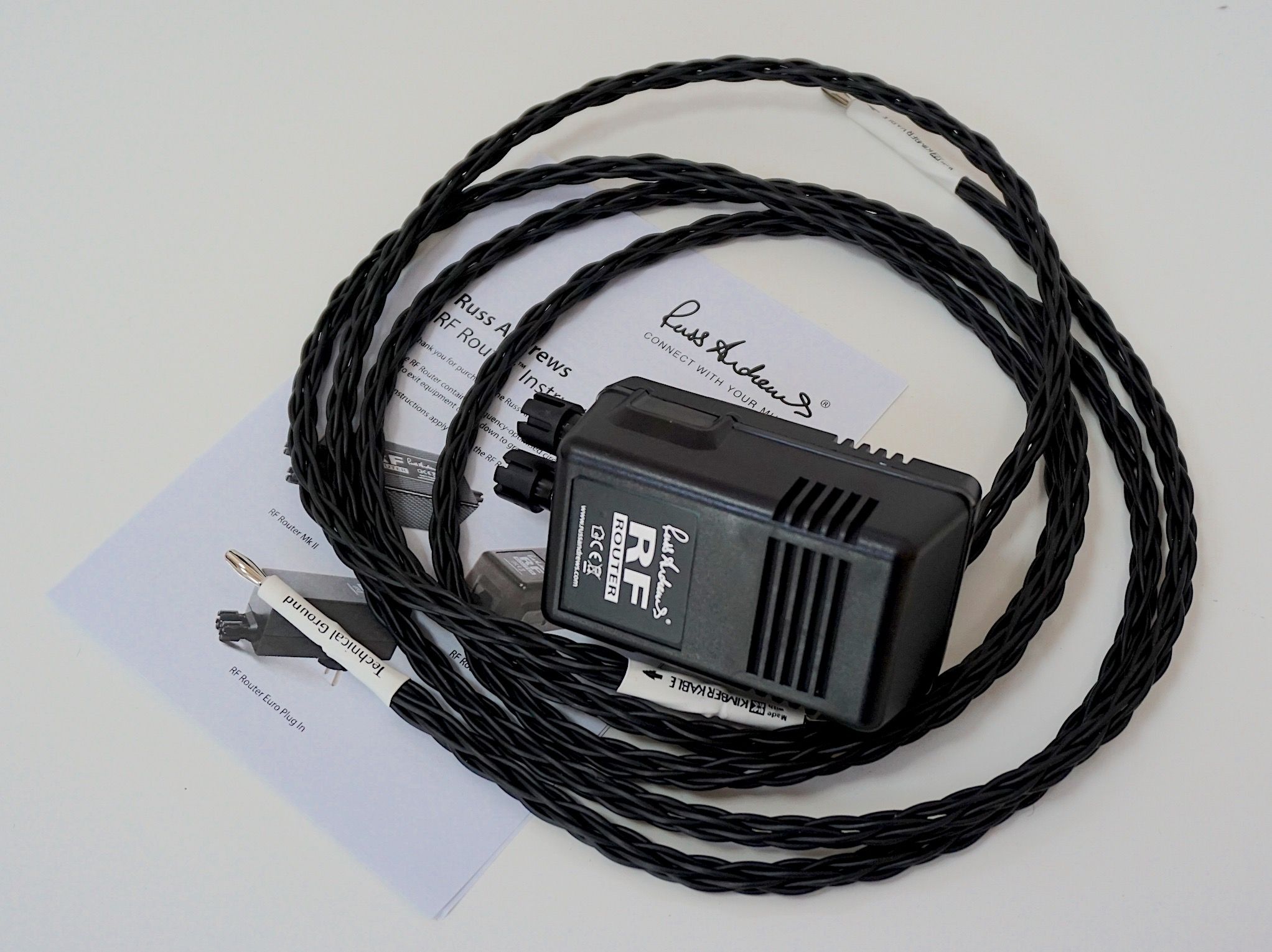
Looking to tackle the thorny question of RFI noise, Paul Rigby reviews this multi-part solution from Russ Andrews
Noise in hi-fi has been an issue of mine for years. I don’t mean mechanical noise, the sort you might hear from a dodgy turntable bearing or similar and I don’t mean hydraulic drills and babies crying either. I mean the sort of high-frequency stuff that you don’t know is actually there until it’s been removed. Upon which you suddenly realise that all of the lovely detail your hi-fi has been producing over the years had gone unnoticed by your ears for all of this time but is now accessible.
Masking noise arrives in many flavours. This accessory looks to tackle RFI (radio-frequency interference) which is a major culprit in hampering sound quality in hi-fi.
The RF Router Mk.II is not much to look at, to be honest. It arrives in two essential pieces, well two flavours. You choose the best one for you.
The first choice is a small ABS case containing an RF filter that sports three, nickel-plated binding posts. Two on one side to connect to your hi-fi and a third on the opposite side of the box to connect to an external copper rod (suitably buried in the garden) that acts as a useful exit point to dump RFI noise, with a wire trailing from the rod to the Router. If you don’t have such a copper protuberance, you can find one here for just over £20: www.russandrews.com
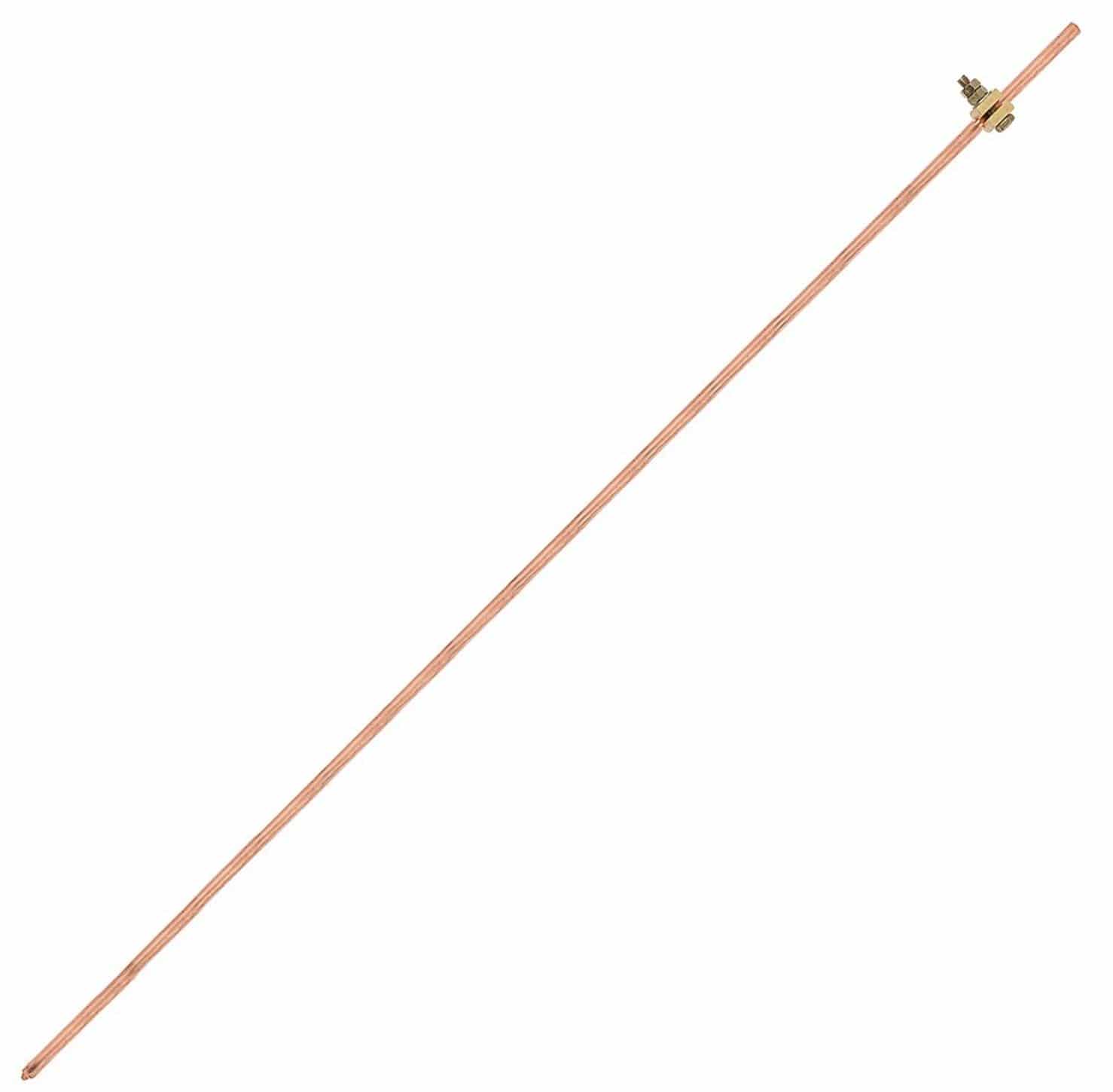
If you don’t have a copper rod or a garden or the concept is inconvenient or impossible to set up, then you’ll be wanting the other flavour of RF Router, which can be had for the same price of £199. This takes the form of a mains plug/wall wart which also carries a couple of binding posts.
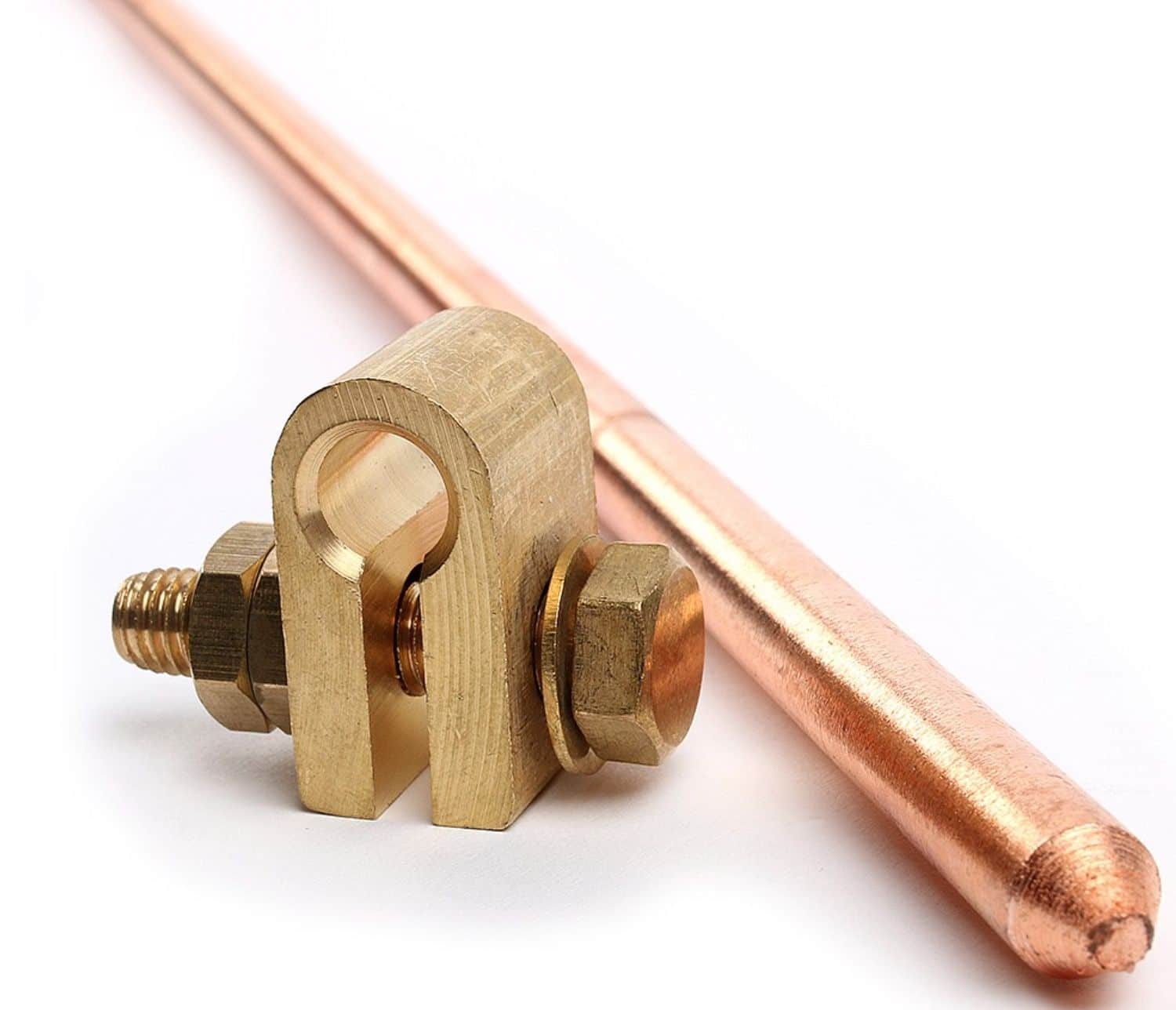
Hence, the difference between the two Router types is merely how the RFI noise will be dumped: to the mains or to an outside, external copper pole. Inside each box is well, a secret. There is filtering gear inside but I can see why Russ Andrews want to keep schtum about the technology. Copying of technology does occur by the unscrupulous and Russ Andrews want to maximise their profits, of course.
The RF Router Mk.II arrives bundled with a 1m, spade to spade (5mm) grounding wire. Longer lengths can be ordered, as can additional wires and termination types for more components. All binding posts can handle 4mm banana and 6mm spade connections plus bare wire.
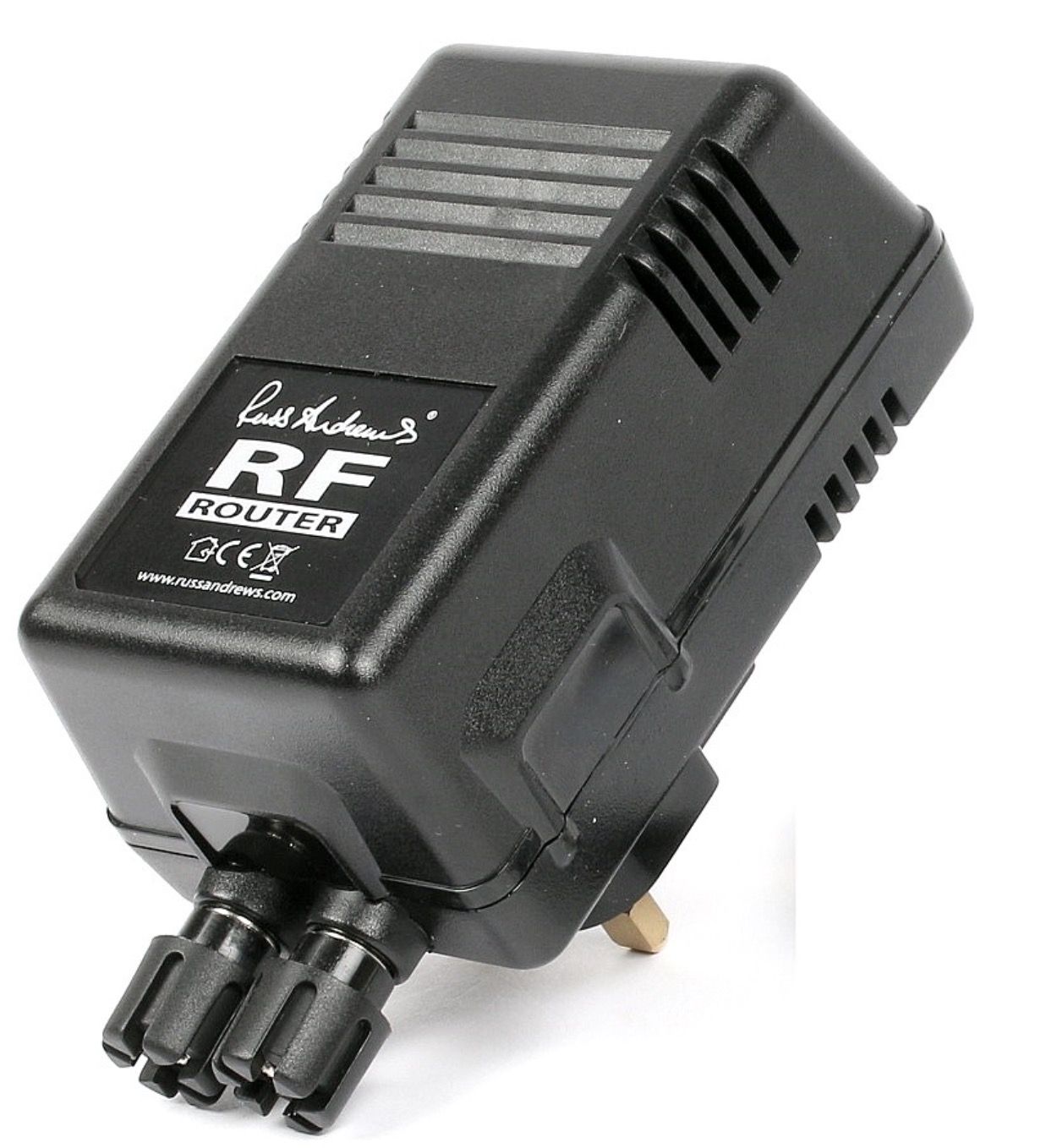
The idea is to ground your hi-fi components and dump any RFI found into the mains, reducing the noise floor around your hi-fi and improving sound because of it.
The dumping system is one way too. So there’s apparently no chance of new noise emerging from the mains to infect your hi-fi system all over again. The Router has been designed specifically, “…for those not wanting to use an additional earth spike or having to replace a wall socket to enable a ground connection,” said the company.
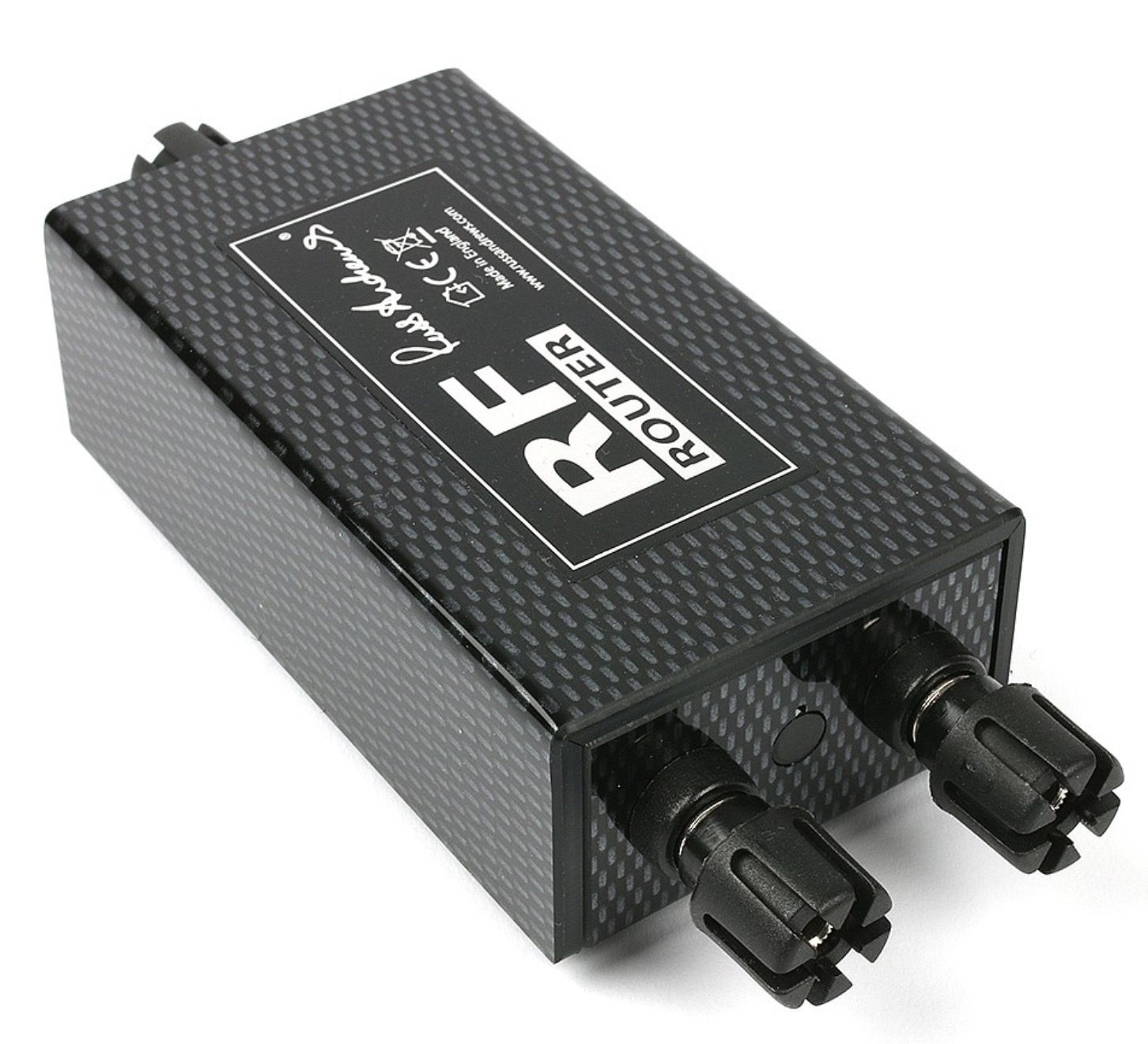
Incidentally, the Router can be used along with Russ Andrews’ own SuperSockets or UltraSockets, if you wish. Although I didn’t test those units in this review.
CONNECTING IT ALL UP
To learn more about the differences between Earth and Ground, the basics of the system, what to do if you own Naim equipment and the different ways you can connect the system, check out this PDF: https://www.russandrews.com/images/pdf/GroundingV6.pdf
I will talk about how I connected my own system and a diagram of that is posted below.
Now, everyone will more than likely have a different set up, specific issues and potential questions. If you do grab the RF Router Mk.II and you fancy using it but have a million and one questions about it and how it should be connected to your system then you’re welcome to ring Russ Andrews. One of the chaps there will be happy to talk through the system with you and also how the system should be connected to your system.
Actually, that’s what I did. Talk first, that is. The diagram you see above was supplied to me after I completed one of those very chats. A Russ Andrews staffer then emailed the diagram to me, I confirmed that the diagram was fine and the components were then posted based on our conversation and the agreed diagram.
And that’s how this will work with you, if you decide to go for the RF Router Mk.II. Talk first, confirm your requirements, buy what you need and then ring again if you need to talk some more for installation advice.
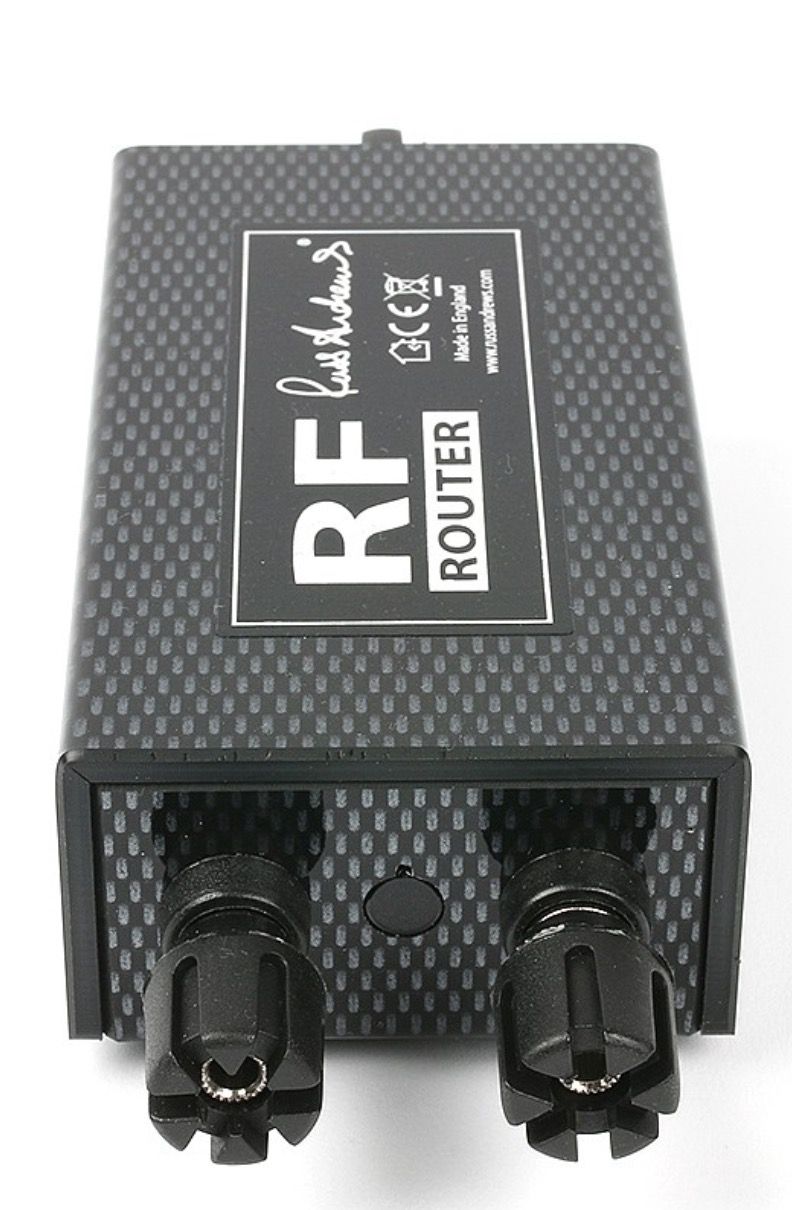
Hence, I don’t see this accessory as a ‘buy it off the shelf then plug it in’ thing. You need to work with Russ Andrews and Russ Andrews need to work with you because there really is no one box solution. Mainly because your system and your situation will be unique to you.
As you can see here, the system I decided to connect comprised a turntable, CD player, two-box phono amp, pre-amp and two monoblock power amps. As I say, you can talk to Russ Andrews if you have a different set-up and that won’t be a problem. Streamers, AV receivers, all-in-one systems, digital hubs, you name it, Russ Andrews will talk over your own requirements and room set ups and any strange and weird tweaks that pertains to your own set up.
I have to add here, I love this willingness of Russ Andrews to actively communicate with the hi-fi public. These days, I tend to be surprised when I’m not talking to an Internet bot or a machine on the phone. There really is nothing like talking to a human being. Especially when potentially confusing hi-fi questions are the topic in hand. So, well done Russ Andrews on that score at least.
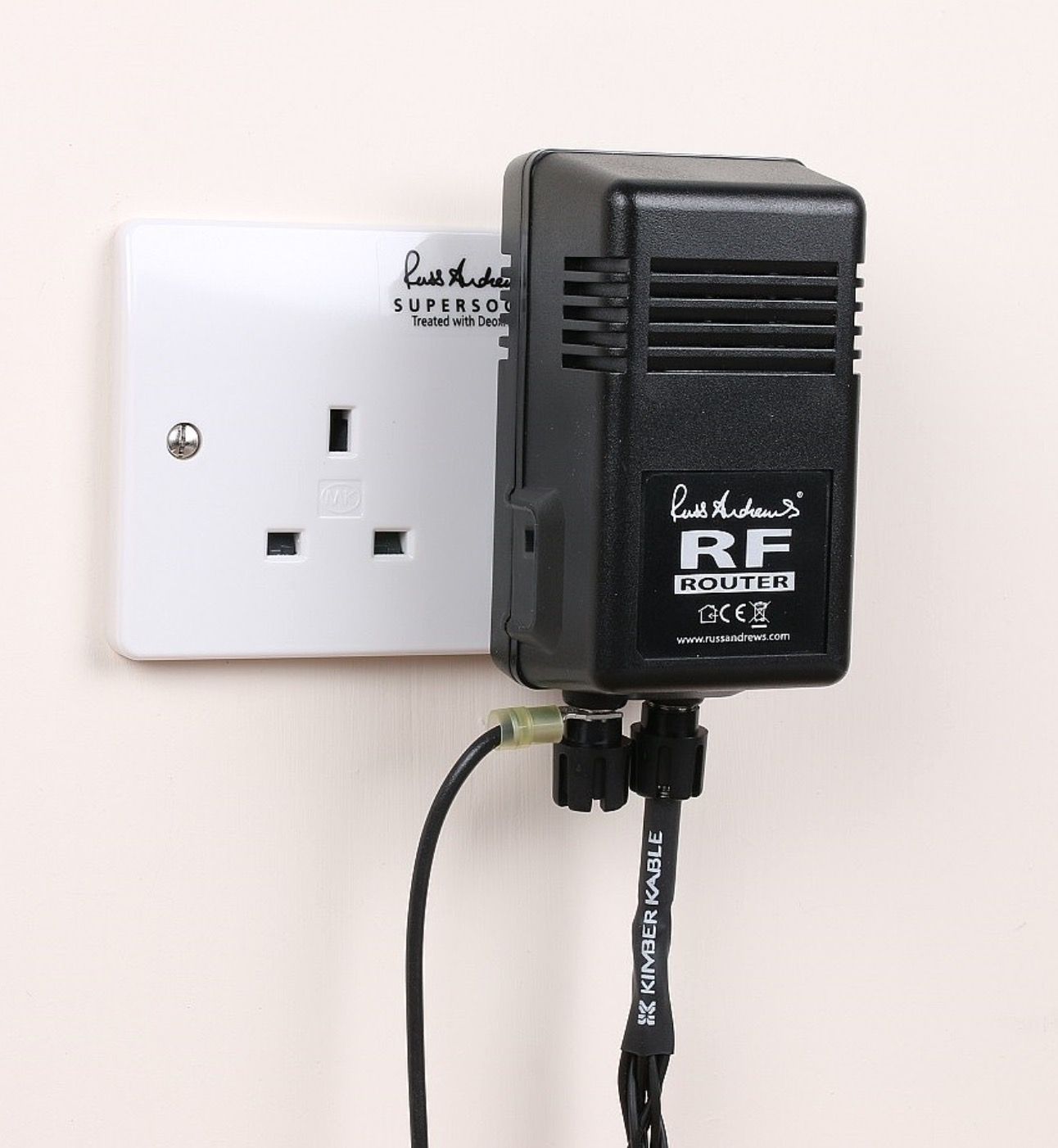
With my turntable set up, there was no obvious method of including that into the Router system (your turntable may be different, of course) but the rest of my hi-fi chain could be connected.
Now, you may be thinking, “Hang on, he wants to connect a total of five boxes to this grounding system and he only has a Router plug with two binding posts? How’s that going to happen?”
What I did was this. I was fortunate to have a lot of components featuring their own ground sockets.
To begin, I plugged a grounding cable toting a banana plug into each of my monoblock’s ground sockets. Both of those were then connected to one terminal of the Router plug. You can plug two banana plugs into a typical binding post. One horizontally, as normal. The second connection can be found if you unscrew the binding post. You’ll see a hole exposed on the screw-threaded metal bit. Push the second banana plug, vertically through that.
So that’s the monoblocks sorted then.
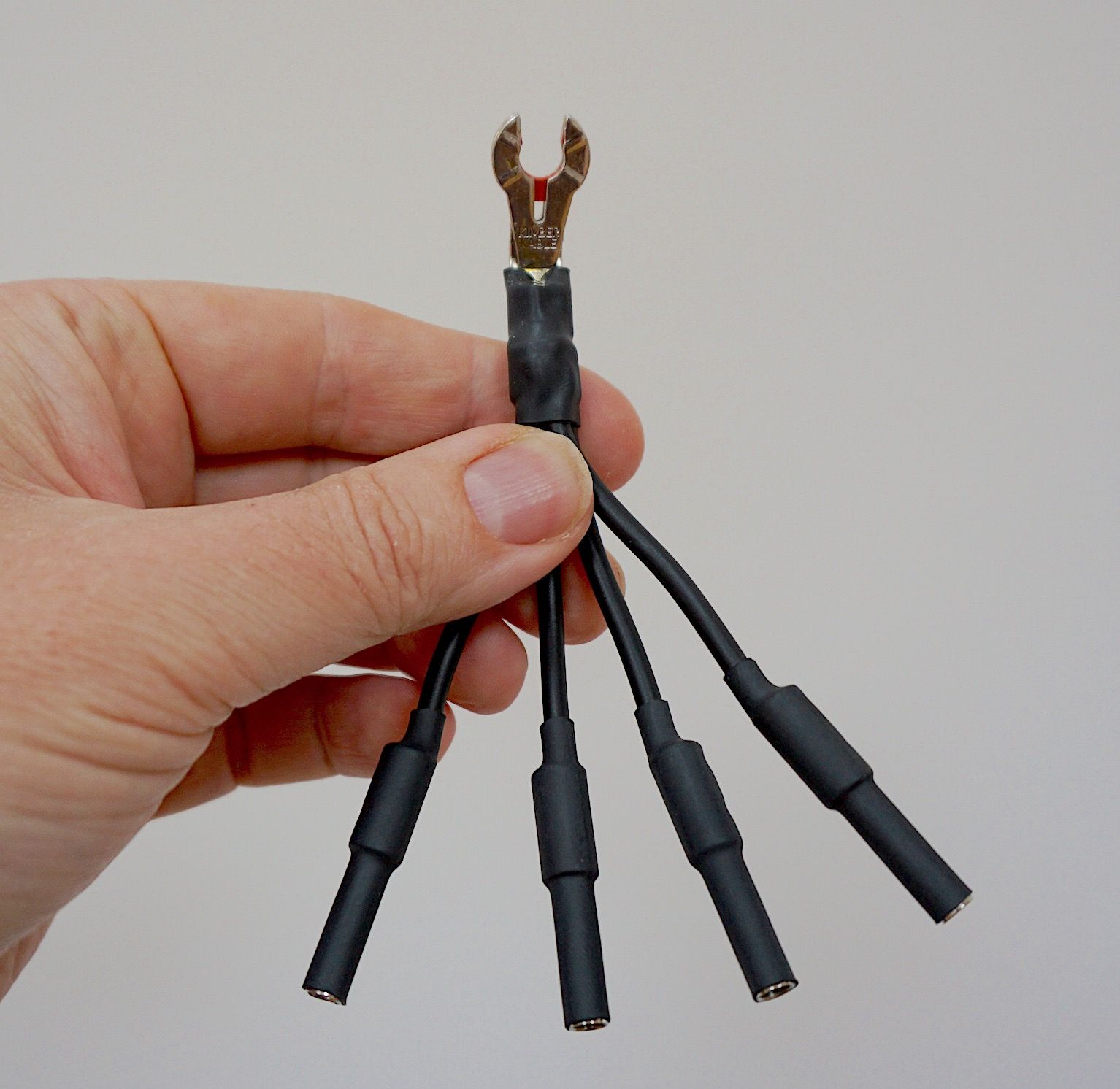
I was then given an odd looking connector (see above). On one end was a spade plug for my pre-amp’s ground connector. On the other end trailed four banana plug sockets (you may or may not end up with the same connector, it depends on your system and that’s one thing to talk about with Russ Andrews). So I plugged the spade end into the ground terminal of my pre-amp and those four cables plugged into the CD player, both boxes of my phono amplifier and the other binding post of the Router.
Now, one box on my phono amp had a ground socket. That was an easy connection. The other box on my phono amp did not. Neither did the CD player.
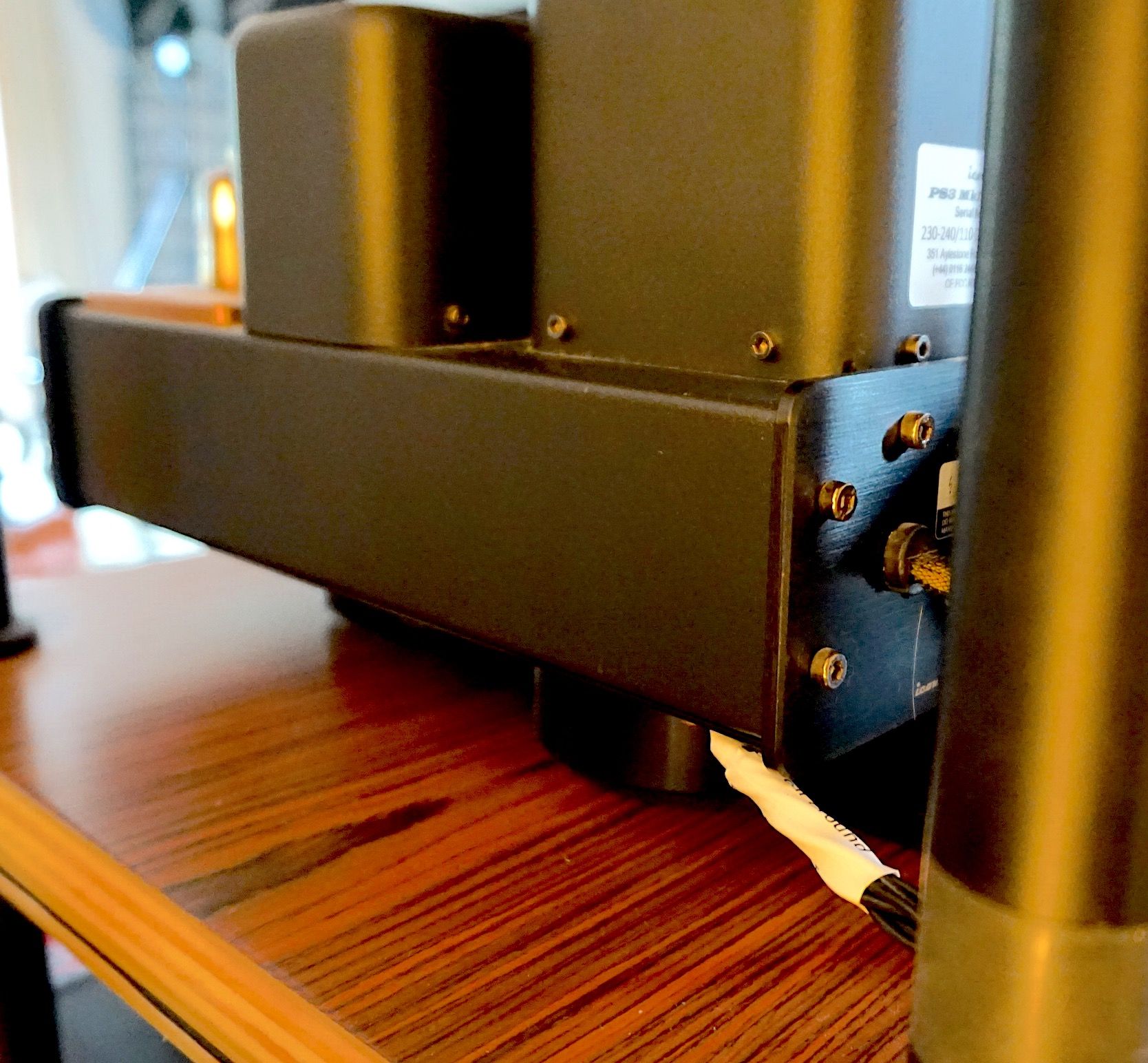
What Russ Andrews encourage you to do – and it’s up to you whether you want to follow this advice – is to find a screw on the chassis, any screw, loosen it enough to insert a spade plug from the Router, then tighten it up again (see above and below). If you feel uncomfortable about that, then don’t do it. Saying that, with a single screw, you shouldn’t come across any problems and you’re not removing it, just loosening and tightening it up again.
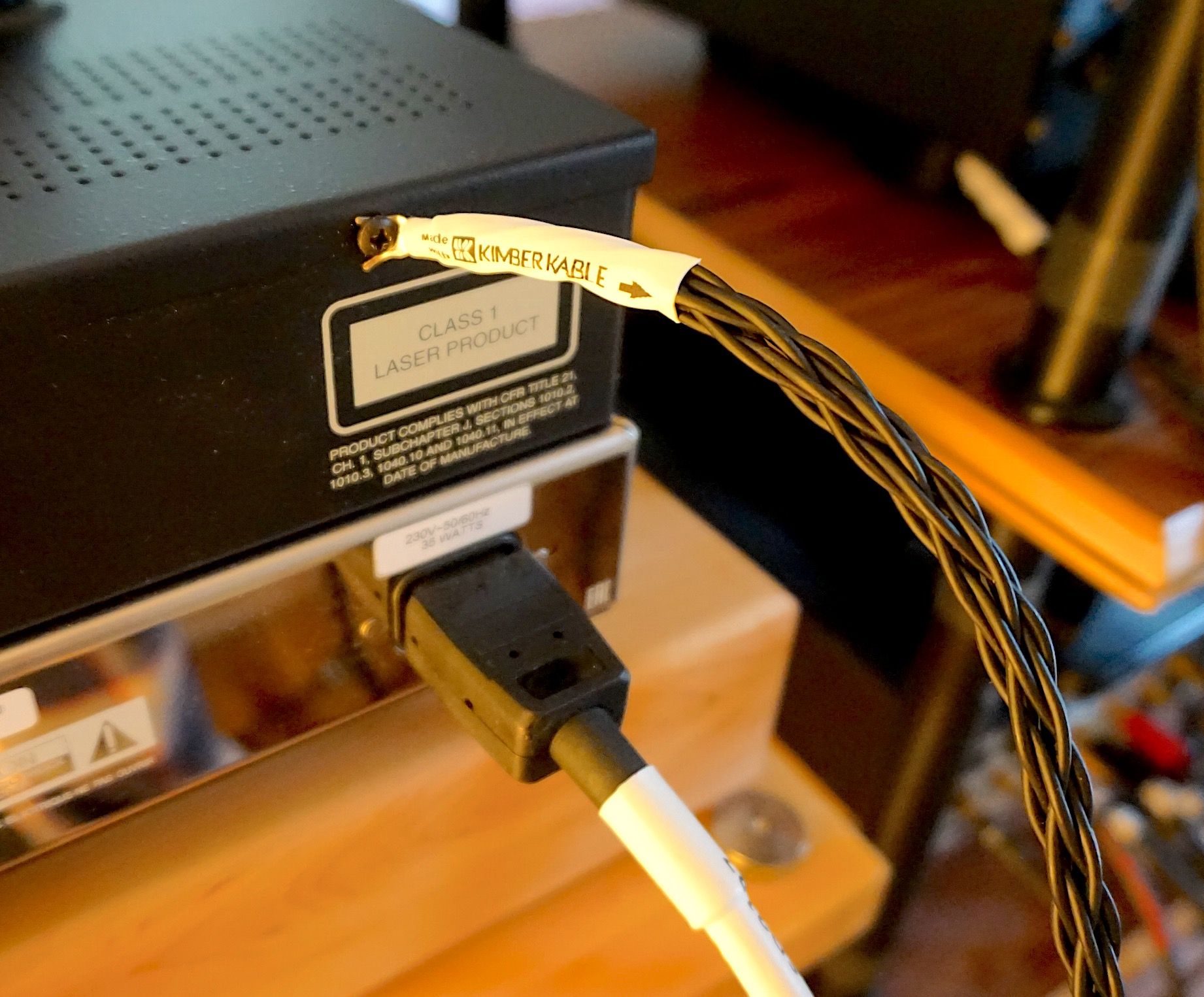
Once all of the cables were connected, I inserted the RF Router Mk.II plug into the mains. And that’s all you need to do, by the way, you don’t have to actually turn on the plug at the mains. The ground pin on the plug works either way.
So why are there three pins on the plug-in Router, if only the Ground is active? I asked the company which replied, “What would normally be the Live and Neutral pins are not connected internally as they play no part in the performance of the Router, but we leave them on the box as they help give a more solid connection in the socket.”
This is one of those products that might initially seem complex and difficult to get your head around. But after a chat and some explanatory clarification, it will then appear straight forward and pretty simple indeed. The fog will clear after a talk.
And before we get to the sound test, I have to say that I dislike the name, ‘Router’. I wish Russ Andrews had used something else. As it stands, it sounds much too much like a telecommunications product. Something stuffed with Ethernet sockets, phone wire and a hankering to search the Internet. I would encourage Russ Andrews to change that name at the soonest.
SOUND QUALITY
I played Katie Melua’s excellent new album, the easy-going Album No.8 which arrives along with an orchestral arrangement and improves with every play. Melua has never figured on my play list. I’ve never even thought of her as an artist I would want to listen to. But boy, this album? Blimey, it’s a good one.
To begin, I decided to use the plug-in RF Router (pictured below) and only plugged my monoblocks to the unit to hear how they were affected, if at all.
Oh and they were. They certainly were. The effect was greatest around the lower registers which, coming from the power monoblocks, makes sense. There was a distinct reduction in the noise floor but the lower frequencies saw the majority of the improvements here. That meant the drums and the bass guitar but also lower mids were affected in a positive sense too.
This also meant that the Melua vocal sounded firmer in its delivery. There was a foundational weight in her voice. Almost as if she was, well, more certain about her singing. There was a bit more of ‘from the tummy’ about her singing now. Not overly, of course, but there was a sense of tonal correction. There was slightly less emphasis on the ‘floaty’ now. I also noted that cymbal taps had a weight while acoustic guitar string plucks benefitted from the lower noise too.
Interestingly and crucially, I could properly hear the tambourine for the first time. Strike that, I wasn’t even sure there was a tambourine on this track before I fitted the RF Router Mk.II into my system. That confusion was now cleared up.
I then plugged in the cables to the pre-amp and the part of the phono amp that featured an earth socket. This left the other part of the phono amp – the part toting the power supply bit – and the CD player without treatment. At least for now.
Adding a cable to the pre-amp lowered the noise floor around the upper mids and treble and smooth the Melua vocals but the combination of the treated pre-amp and the control/pre-amp part of my phono amp added definition to those effects. You could really hear a sense of the double tracking occurring on the Melua vocals while the acoustic guitar and cymbal taps were defined now. Almost like they were more exposed in the mix, offering more information for the ear to enjoy.
Then I found a likely screw head underneath the power supply part of my phono amplifier, loosened that, attached the cable, screwed tight and listened. Now I felt that the entire system had come together.
There was a real sense of smooth maturity right across my hi-fi chain. The sheer sense of ease was palpable. A relaxation and a loss of friction that allowed the frequencies room to manoeuvre but also removed any sense of edge or even a slight hardening. To be honest, I’m pretty happy with my system ‘as is’. Well, ‘as was’. Once I hooked up the Russ Andrews RF Router Mk.II, I realised just how much noise was still floating around my system.
The result? A major improvement.
Then I waited. For 18 hours.
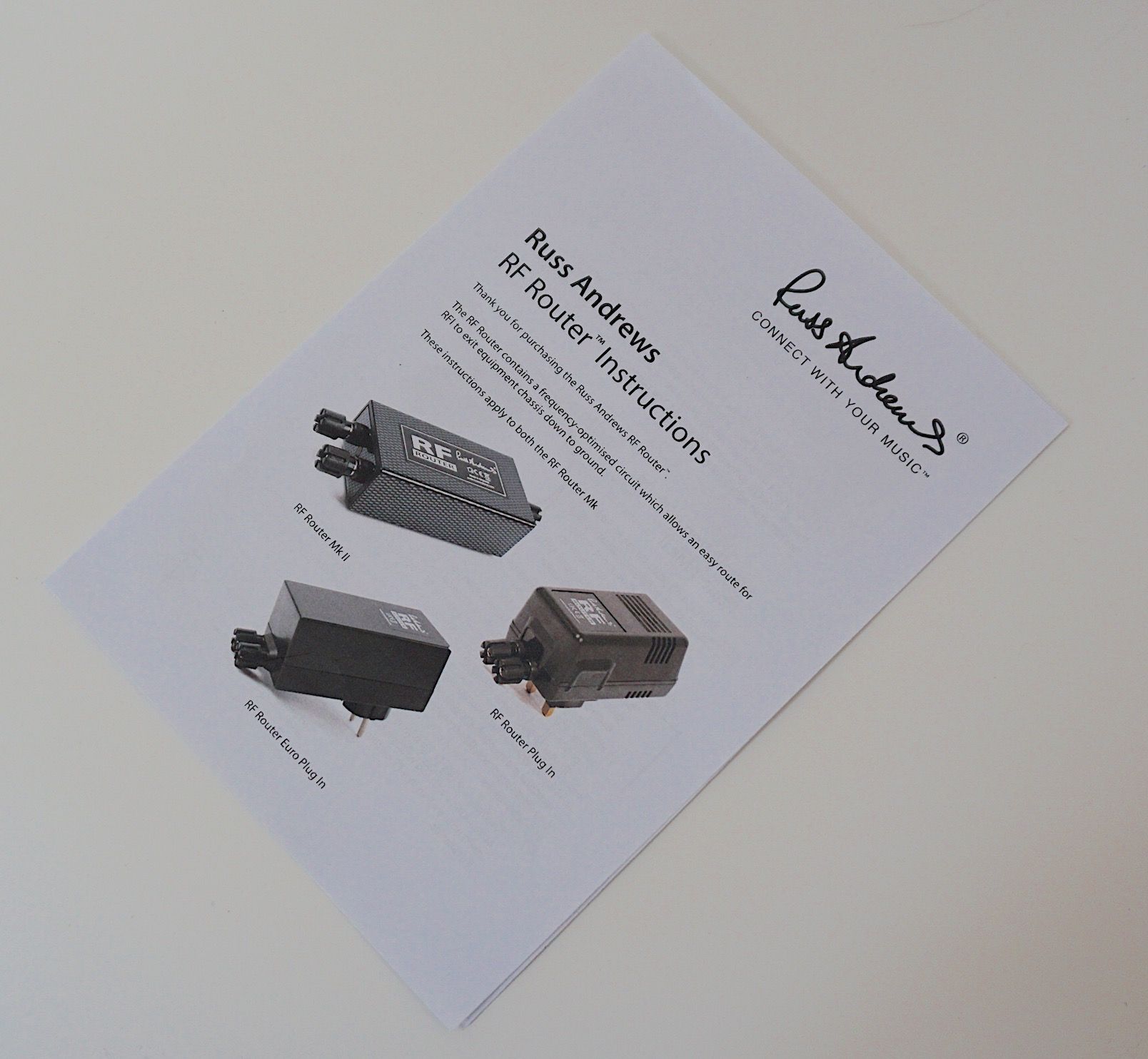
If there’s one thing I’ve learned about grounding systems is that these accessories act as a drain so it often takes time for the grounding system to take a full affect. That proved to be the case here too. After 18 hours of settling in, I found that the string section, found on the right channel, exhibited greater weight in terms of its presence but also far more space now surrounded this part of the orchestra. The rest of the soundstage also revealed an infusion of space.
Next up? I decided to swop the plug-in Router for the Router to be connected to an outside copper pole, conveniently buried in my garden (alongside the rest of the bodies, of course). Bereft of socket pins, this new ABS box featured two sets of binding posts on one end to connect to the hi-fi and another binding post on the opposite side. For the latter, I connected the wire trailing from my buried copper pole. This was a bare wire connection.
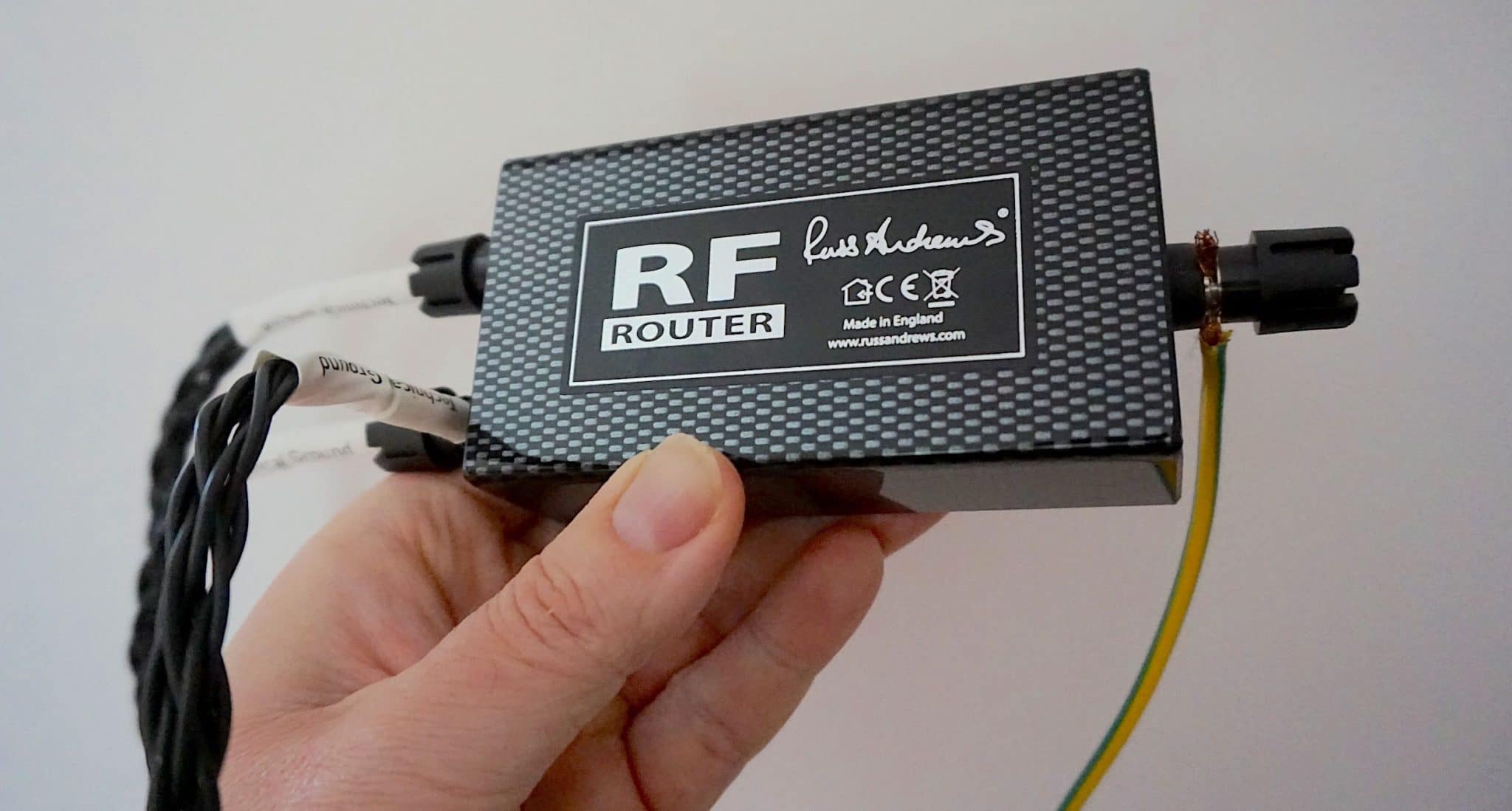
The result? The sound improved further! I was surprised at the change actually, which did ramp up performance from the socket-connected Router. The latter was excellent as it was but now the copper pole-connected RF Router took sound quality up a level.
The enhancement was primarily heard directly around the stereo image where Melua’s vocal was pushed back in a newly formed 3D affect. Back too went the percussion and the cymbals. This left more room up front for the acoustic guitar (left channel) and the string section (right channel) which then filled some of the left-over space with more detail.
The end product was a tremendously mature and rich soundstage. One that was quite breath-taking to behold. The purity of Melua’s voice was now wholly beguiling while the accompanying instruments flowed like a river around her. The detail from those instruments was also fascinating and completely enthralling while the noise floor? Well, I’d never heard it so low, I have to say.
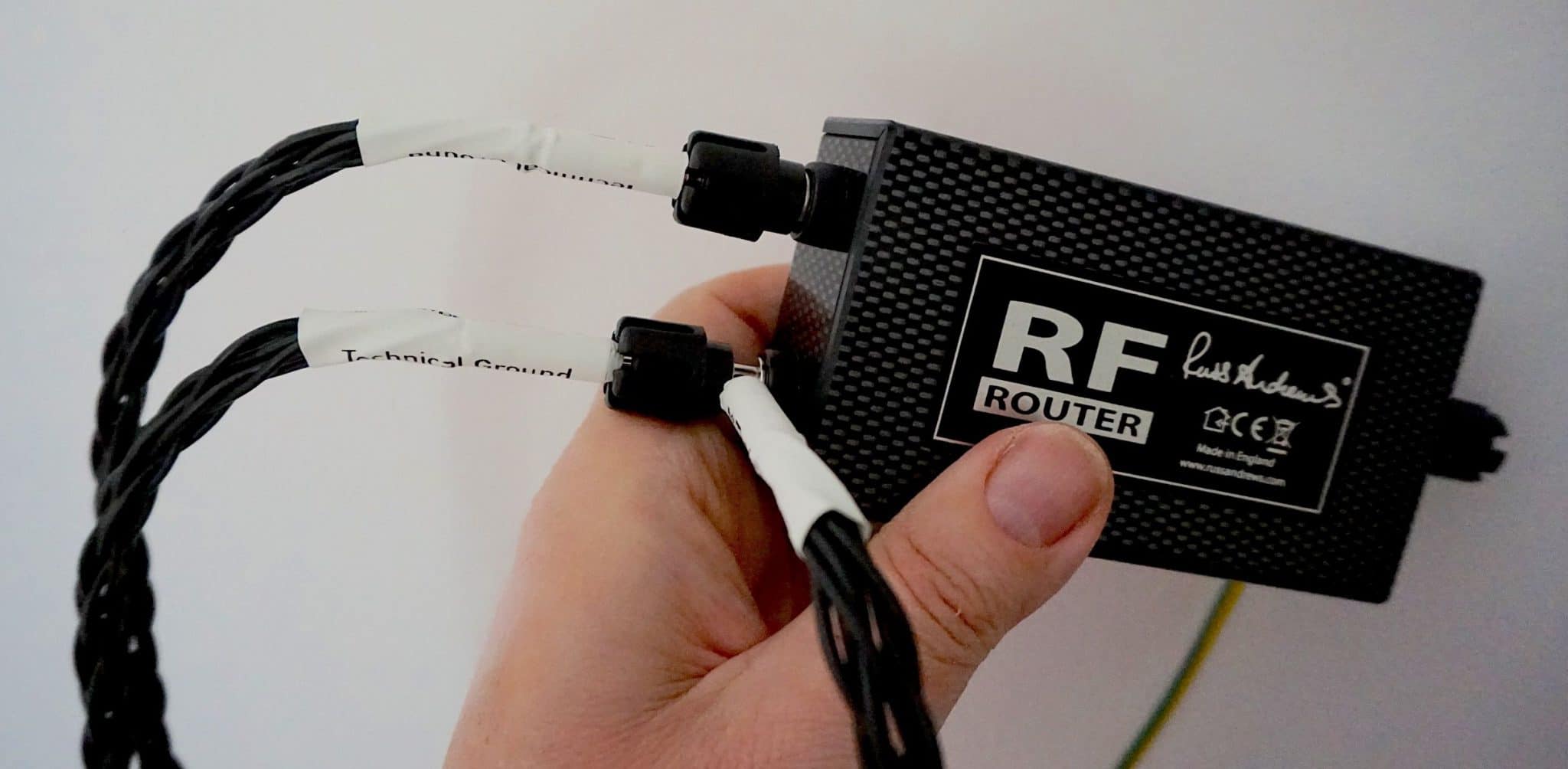
Moving to more dynamic fare, I turned to New Order’s album, Republic (CentreDate) on CD and the track, Regret. A track that has inherent peak-limiting compression problems. This would be a challenge for the Router.
I used a McIntosh MCD600 for this one. The MCD600 didn’t feature a built-in earth socket so I found a screw on the rear of the chassis to connect a grounding cable.
But first, before I hooked up the CD directly, the sound was still a big improvement over what I expected. Why? Because the pre-amp and power mono blocks were already attached to the RF Router Mk.II. This alone meant that the compression effects of this CD were reduced in their attack. The mids were far smoother, bass verged on the organic (shock and, indeed, horror) while the listening experience was strangely pleasant, especially as I noticed two to three new and previously shy instruments right at the back of the soundstage where before, at certain points, I was almost hearing white noise. I wasn’t used to that at all. I was even able to increase the pre-amp gain by 5-6 notches without blowing out my ear drums due to distortion.
Then I hooked the CD player to the RF Router Mk.II to hear the soundstage grow in terms of width and height, creating a heap more space. That is, the music emerged from a greater area now while the space around each instrument was increased, helping the bass guitar to become meaner and nastier (in a good way). Secondary percussion was easier to track while a series of layers now emerged and helped to enrich the music. A winner? Oh, yes
CONCLUSION
Grounding accessories are always something I head for because they tend to provide the best value in terms of sonic improvements. There is so much noise in an around your hi-fi system that cutting any of it out via grounding accessories always provides a major leap in sound quality. Even so, I never fail to surprise myself because, even after spending serious time and money reducing noise around my hi-fi chain, there always seems to be more to drain away. As the Russ Andrews RF Router proved. Despite the extra messy nest of cables that come with this accessory which may be frustrating to some, the sonic improvements from this system were significant. And that was in addition to the other grounding accessories that I already have connected to my hi-fi.
Hence if my system, which already features grounding gear, can be drastically improved by the Russ Andrews RF Router Mk.II then just imagine the improvements on a ‘virgin’ system, as it where. One that has never been formally touched by grounding applications.
The sonic improvements from this accessory were significant and the amount of new music that emerged from my mature hi-fi chain after adding the Russ Andrews Router was large indeed. Yes, the option connected to an external copper pole produced the best performance but the mains-connected choice provides startlingly good performance too and I’d be more than happy to only use that option.
Do I recommend the Russ Andrews RF Router Mk.II? Put it this way. It is currently attached to my hi-fi. It’s going nowhere.
RUSS ANDREWS RF ROUTER Mk.II
Price: £199
Tel: 01539 797300
Web: www.russandrews.com
GOOD: noise reduction, set up advice, 3D stereo image, transparency, clarity, price
BAD: more cabling
RATING: 9
[Don’t forget to check out my new Patreon Page at www.patreon.com/audiophileman, for exclusive postings, giveaways and more!]
REFERENCE
Origin Live Sovereign turntable
Origin Live Enterprise 12″ arm
Van Den Hul Crimson XGW Stradivarius Cartridge
Aesthetix Calypso pre-amp
Icon Audio MB845 Mk.II Monoblock Amplifiers
Quad ESL-57 Speakers with One Thing mod
Blue Horizon Professional Rack System

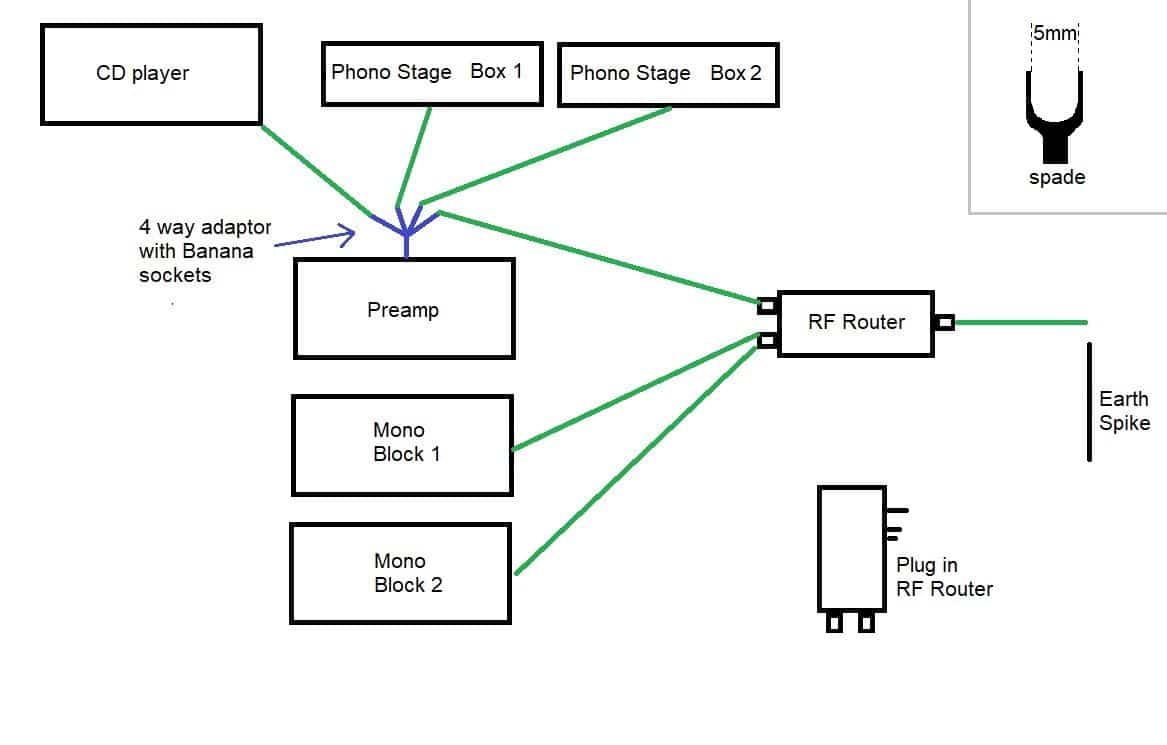
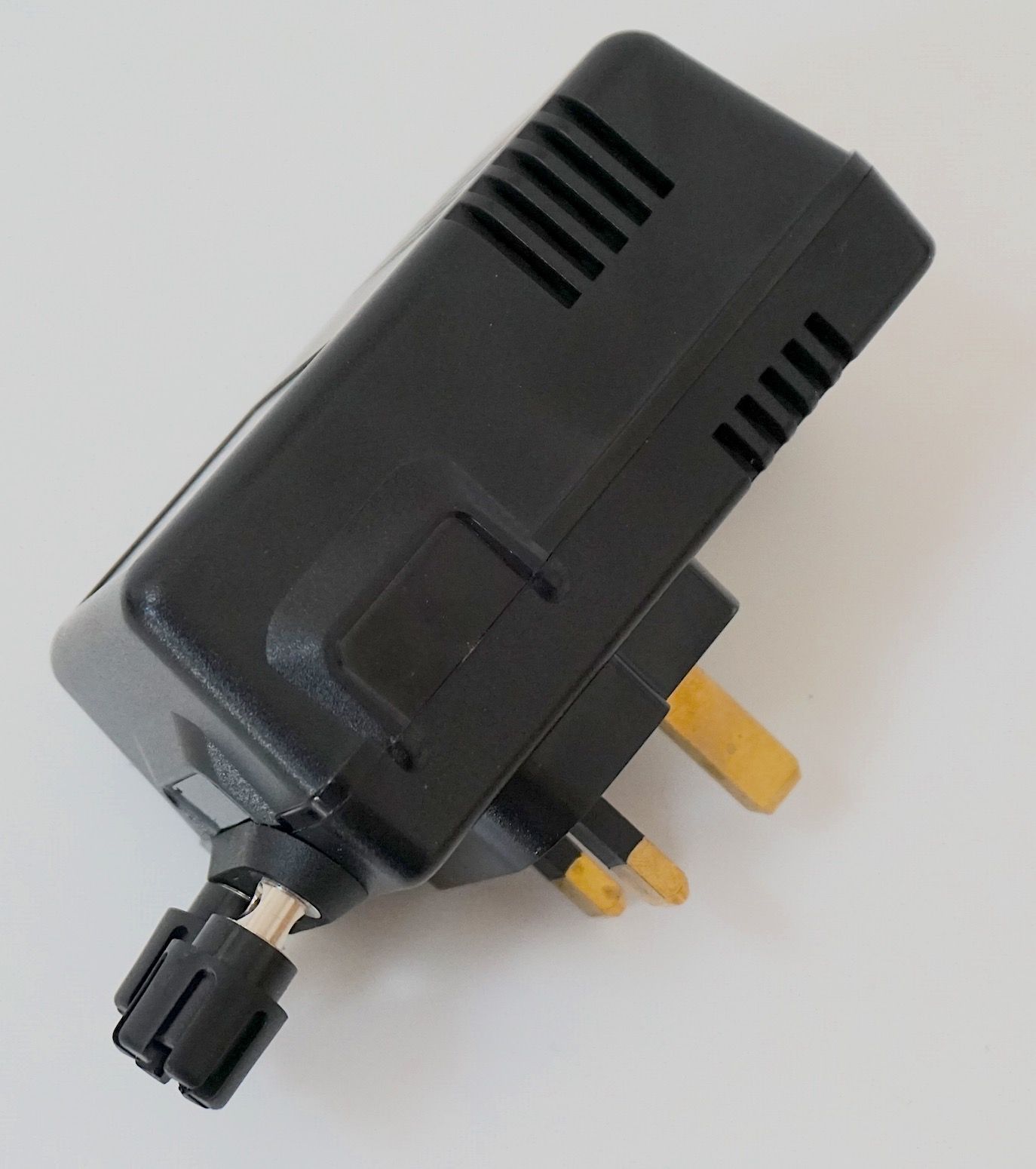
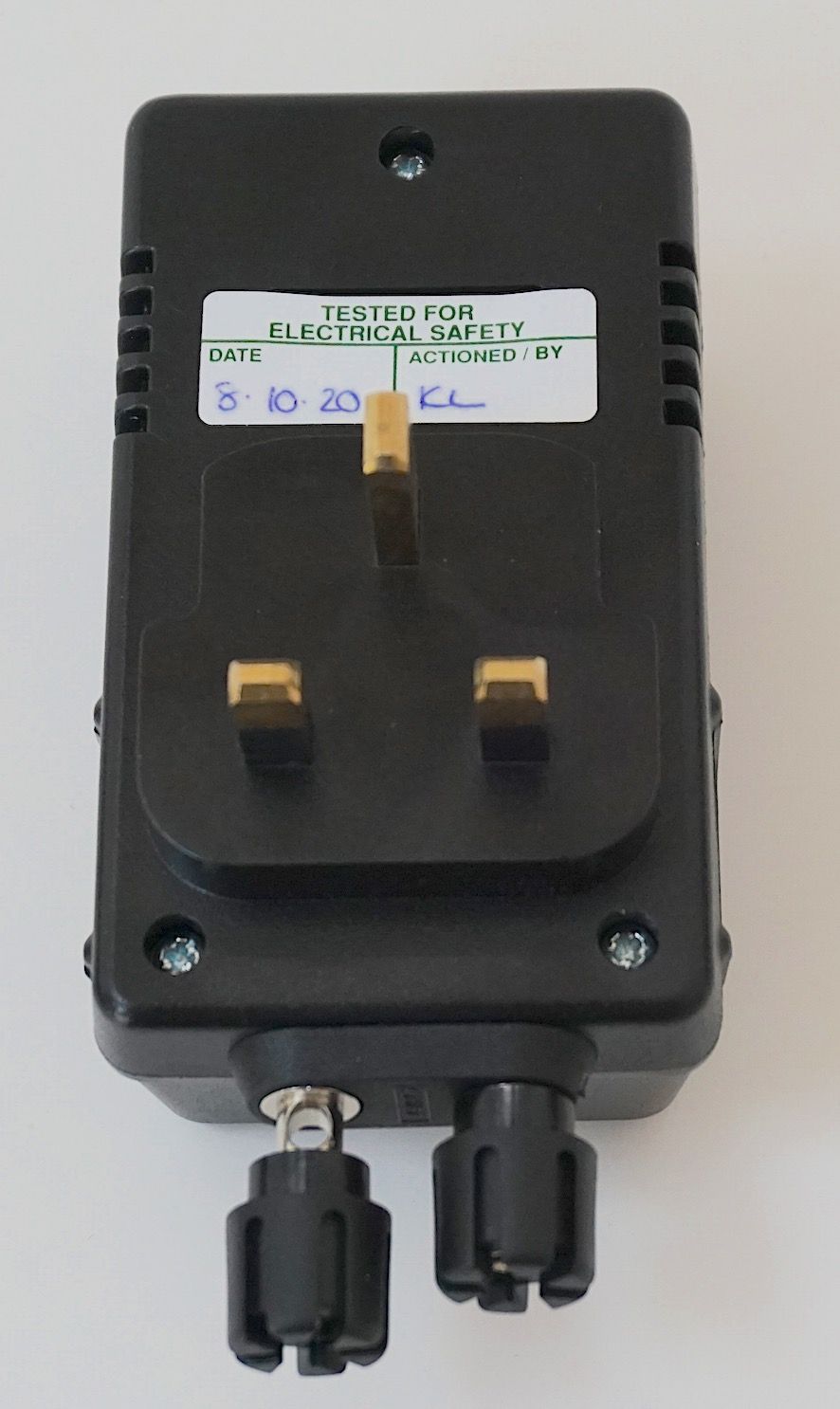
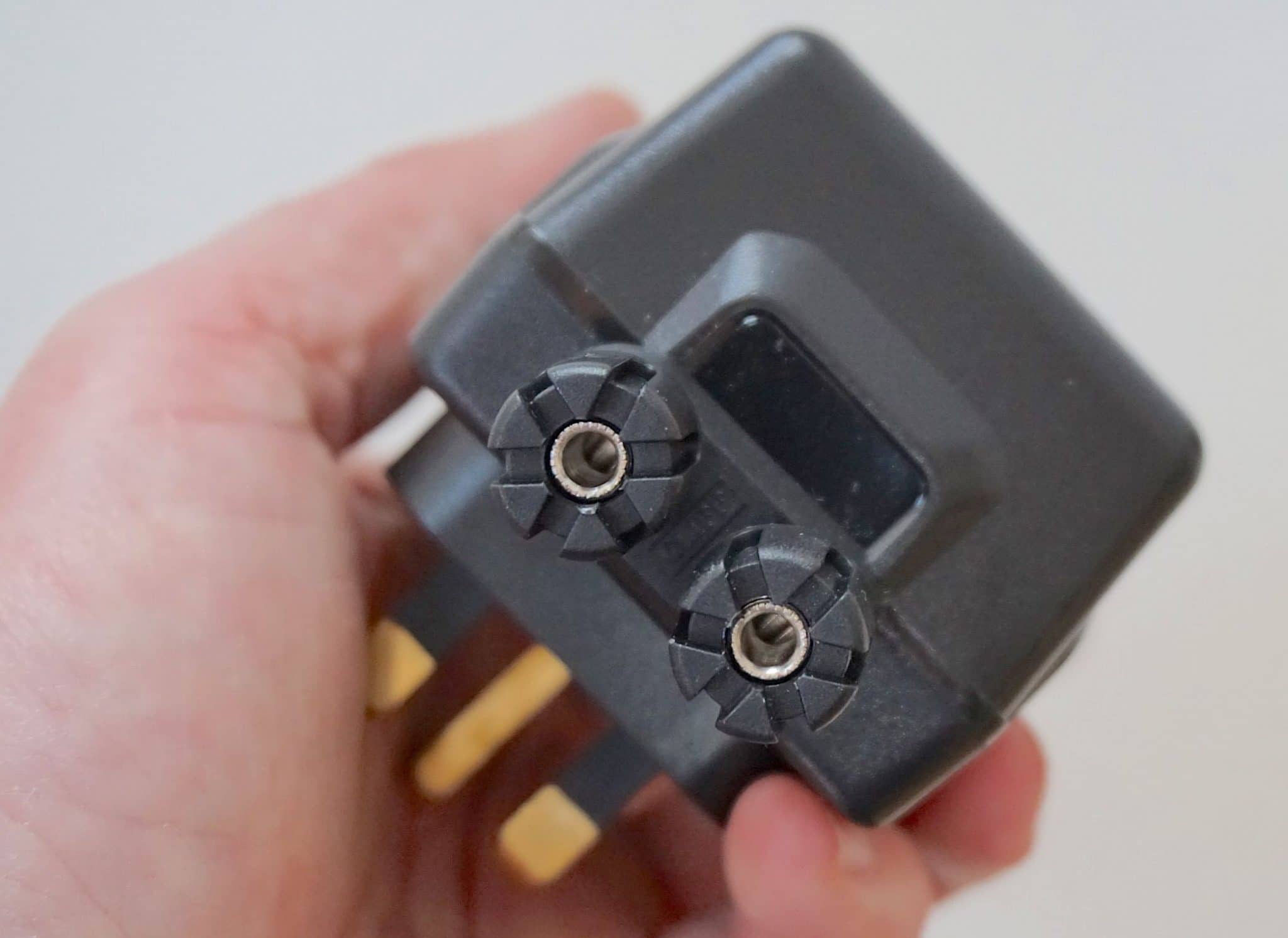
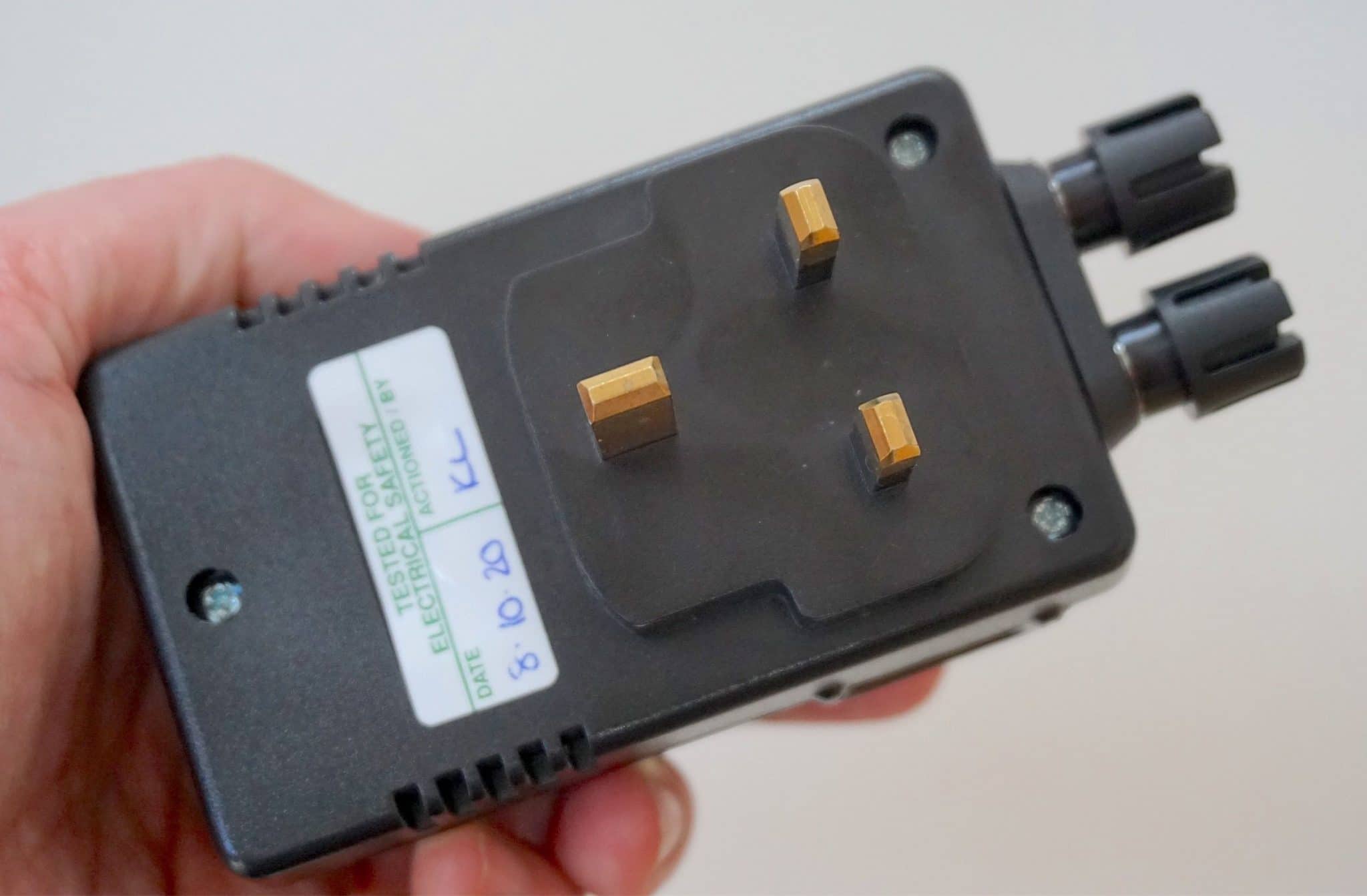
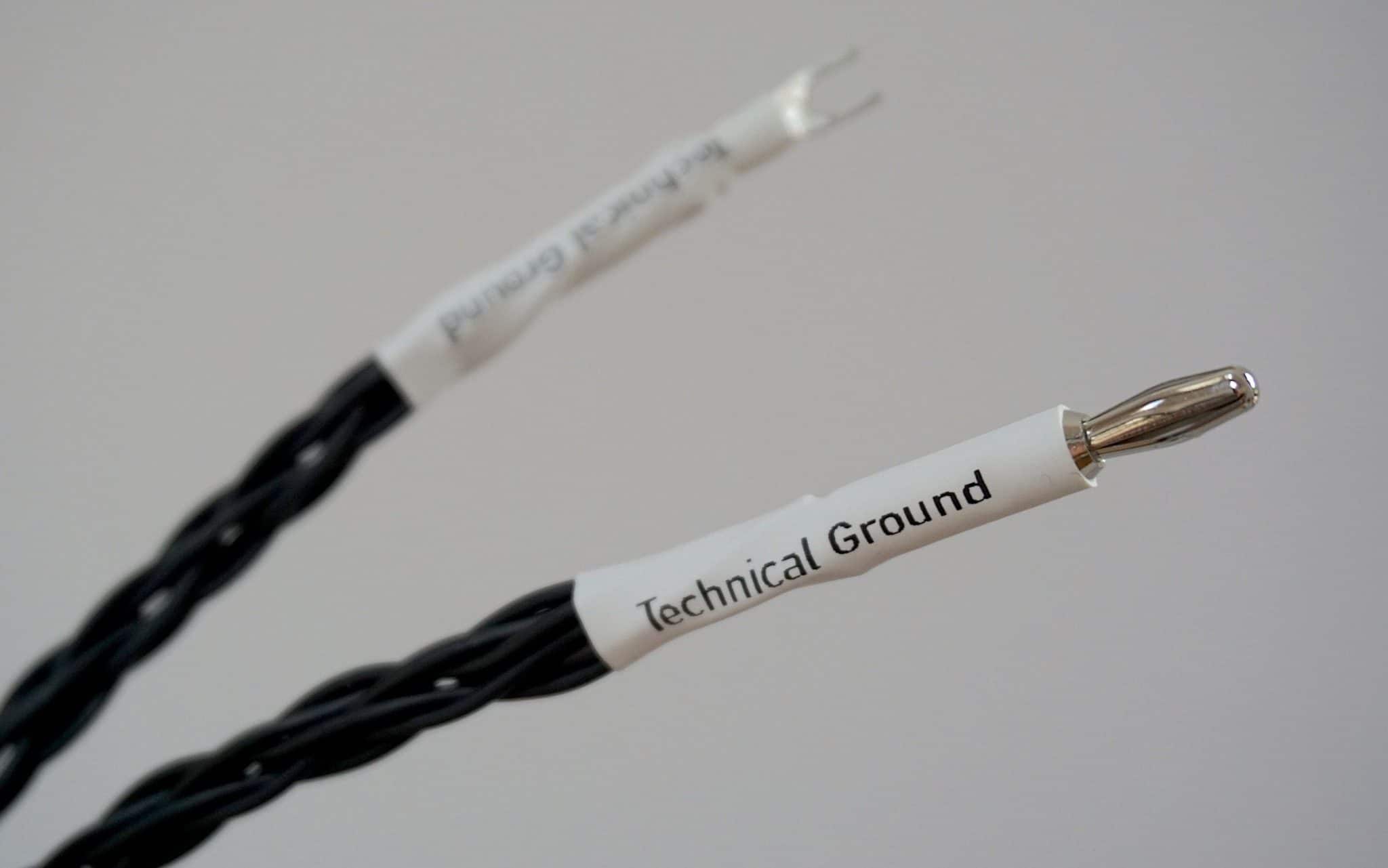

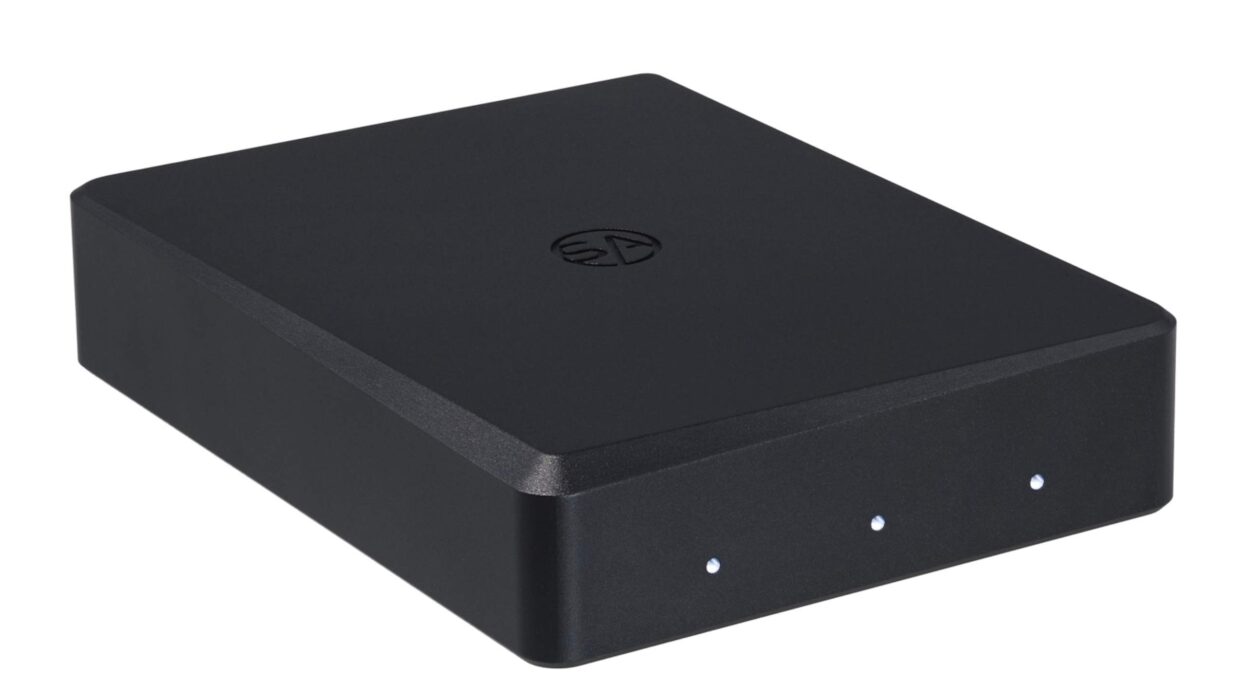

Excellent review of RA ‘router’!
Thanks Nigel!
Sorry Paul , didn’t manage to finish my message will try again .Yes great article on RA’s Router together with links Рreally appreciate this. In general anyone must try the MK II router @ £200 before going for the £700 Super Upgrade as I intuitively feel latter is overpriced & as for the £1200 version that’s crazy. It would be far better to invest the £1K definitely for one & all in the Puritan filtered mains block that you have so excellently reviewed Paul & use that in the Hi-fi chain along with the RA MK II router. I have still not set up my MK II Рnot yet in right location coz of lockdown !
Best, NIGEL.
Thanks Nigel – let me know how you get on with the Router when you eventually sort it.
Hi Paul, I enjoyed your review as always, keep up the great work! So the Mkii was better than wall version? Most likely due the addition ground in the earth. It funny, I was originally looking at the Puritan Ground Master and I saw that you had reviewed the Puritan as well. Dare I say you like this product better?
Hi Joe – well, I liked the external pole version more than the mains connected version. Both connect to ‘ground’ but the external pole seemed more efficient. Both options improved sound quality, though.
The RA version offers more connection options while the Puritan also does a fine job and is still recommended but only outputs to a single ground connection on your hifi.
Hi Paul, Is a RA Router designed to remove induced hum? I get a 60hz hum through my speakers ( louder when I turn up the volume) since I changed my phono stage, I have lessened the problem by moving the phono stage further away from the amp, but on my stack system the two are still relatively close. Do you think the RF Router will cure this problem? Weirdly the hum can be worse on different days, for no apparent reason!
Hi Richard – no, that will a separate issue caused by interference elsewhere. There could be a host of reasons why that is happening. I would, as an experiment, completely remove the phono from the speaker area to see if that cures the issue. IF not, give me a shout.
Hi Paul,
Enjoyed the review sounds a worthwhile investment. Would you be kind enough to let me know the cost of the extra grounding cables.
Thanks
JK
Hi John – here’s a link to some prices for you: https://www.russandrews.com/system-grounding/
As with all your reviews Paul, a very interesting and enjoyable read. The plug-in version might be worth trying but I’m really not sure about the earth-rod method. I’m no electrical expert but I think if you install a secondary earth it now has to be a) inspected and certified and b) cross-bonded to your existing earth connection. This makes sense as having mains-powered equipment connected to two separate earths with differing impedance could be potentially dangerous if a fault occurred and might continually trip the RCD in your distribution board anyway.
Hi Ian – you can read more here, if you need it: https://www.russandrews.com/images/pdf/GroundingV6.pdf
Hi Paul – thanks for that link. I had overlooked the fact that the grounding rod is always connected via the RF Router MkII box which (depending on what’s actually inside it!) provides some electrical isolation between the grounding rod and your mains earth connection. So effectively, the grounding rod is not a second electrical safety earth, just a sink for RF and EMI to earth.
Hi Paul, great article!
Just vurious; what is the difference to this approach versus having every component hooked up with 3-lead grounded mains cable to a power strip which too is grounded to the wall socket? I would guess that the ground pin on the component end is connected to the component chassis in the same way as here, but I might be wrong.
Hi Mikkel – firstly, if you can run a lead to a copper pole buried in a garden, for example, then you’ll notice a more efficient lowering of the noise floor when compared to running ground through the mains. Although the latter is better than nothing of course and Russ Andrew does offer a mains grounding option on their site too for those who cannot access a garden, etc.
I have a Nordost power block with a grounding grub screw and that’s ok but this box performs better because it offers a more ‘active’ (in a passive way 🙂 ) approach when removing the ‘noise’.
Hi Paul, sorry – me again!
Just wondering if you did this review with or without mains conditioning? I myself already use an Isotek mains conditioner which provides similar sonic benefits from reduced RF noise (with a lot less messy cabling). In other words, do you think this could be used in addition to mains conditioning, or as an alternative?
Thanks and keep up the good work!
Hi Ian – I don’t use conditioning but I do use a plethora of other passive ‘de-noising’ hardware and ancillaries. So my system was de-noised to the gills. And this thing *still* made a difference 🙂 If you use conditioning then yes, this one will still be very useful.